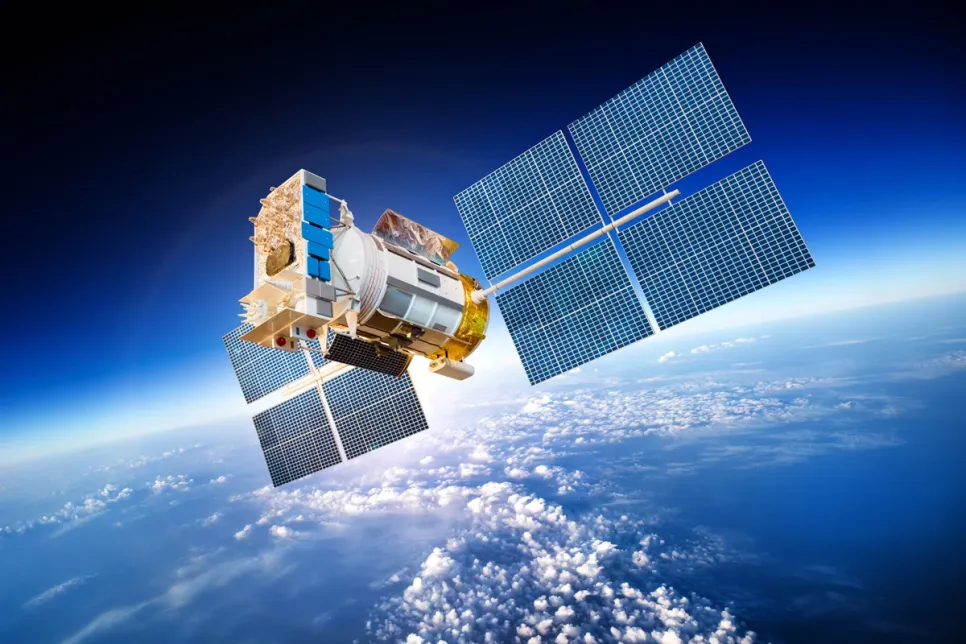Infobip and Haas Unveil Interactive Fan Quiz
Infobip is partnering with the MoneyGram Haas F1 Team on an innovative digital fan engagement campaign, designed to bring racing fans closer to the action.

A consortium funded by Horizon Europe is developing laser sensors that help satellites navigate with ultra precision and enable drones to fly further for longer. The solution should unlock new possibilities in space navigation, autonomous systems, and earth monitoring while boosting Europe’s technological sovereignty.
An ambitious new project, launched by the European Commission under the Photonics Partnership and supported by Photonics21, is poised to transform space exploration and autonomous systems with new sensors that use tiny pulses of laser light to improve satellite navigation and earth observation. The sensors we use in space navigation and autonomous systems today can struggle with precision in harsh environments with low visibility, like fog or dust. The smallest measurement error can lead to major problems in trajectory and positioning over long distances in space, costing millions of Euros in mistakes over time.
At the same time, existing sensors can consume large amounts of power, which is extremely limited in space and autonomous systems. High power consumption can quickly drain batteries and limit the operational time of space satellites and drones. But, the ‘INPHOMIR’ project aims to change this with the development of two new ultra-low-power compact sensing devices – an optical gyroscope and a mid-infrared FMCW lidar – that will aim to make space missions more efficient and cost-effective.
“As we aim to explore space much deeper while conducting more complex missions, the need for precise, reliable, and efficient sensors is now more critical than ever. The advanced sensing technologies we are developing will hopefully enhance the accuracy of satellite positioning, improve navigation for interplanetary missions, and ensure the success of space exploration,” said Daniele Palaferri, senior scientist at GEM Elettronica and project coordinator of INPHOMIR.
The team is developing an advanced optical gyroscope – a super-smart balancing tool for machines and vehicles like satellites and drones that helps them navigate with ultra precision and stay on course. Instead of mechanical parts, it uses laser light to measure how fast and in which direction something is spinning. Inside the gyroscope, beams of light are sent spinning around in circles. When the device moves or turns, the path of this spinning light changes slightly. Sensors then detect these changes and calculate the exact movement and direction. The team is also developing a brand new mid-infrared FMCW lidar – a technology similar to radar, only with laser light instead of sound to create detailed 3D maps of the environment.
The INPHOMIR project is building its sensors onto Indium Phosphide (InP), a special material that allows scientists to squeeze large computing power into something the size of a thumbnail – creating super-efficient, tiny sensors. The team uses InP to make advanced photonic integrated circuits or ‘PICs’ that surpass current technologies. PICs are similar to microchips in a phone or computer, but instead of using electricity to move information around, PICs use light. In a regular chip, electric signals travel through wires to process information. In a PIC, however, light beams travel through tiny channels, doing the same job but often much faster and using much less energy.
The INPHOMIR sensing technologies are also being developed to improve upon existing drones – including the Horus, Helyx-Zero, and Helyx-One varieties – helping them navigate on their own. Horus can carry heavy equipment and is perfect for creating detailed 3D maps and doing tricky jobs all by itself. Helyx-Zero is small and lightweight, which is ideal for farming and examining areas like fields. These drones will make tasks like surveying land, inspecting buildings, and farming much easier and more accurate. Using the advanced AI technology being developed by the INPHOMIR team, these drones will work on their own, saving time and reducing human effort.
Developing PICs is complicated and expensive, requiring billions of euros, advanced technology, and a highly skilled workforce. At present, most PICs are made in parts of Asia, where considerable investment has been made to develop this industry over decades. However, by providing miniaturized and advanced photonic technologies, the INPHOMIR project is set to boost European industries and help create an EU PIC ecosystem.
The INPHOMIR project is a collaborative endeavor funded under the HORIZON-RIA (HORIZON Research and Innovation Actions) and supported by the Horizon Europe program, the EU’s key funding program for research and innovation. The project brings together a consortium of academic institutions and industrial partners. The multidisciplinary project is coordinated in Italy by Gem Elettronica with eight other partners and will conclude in 2027.